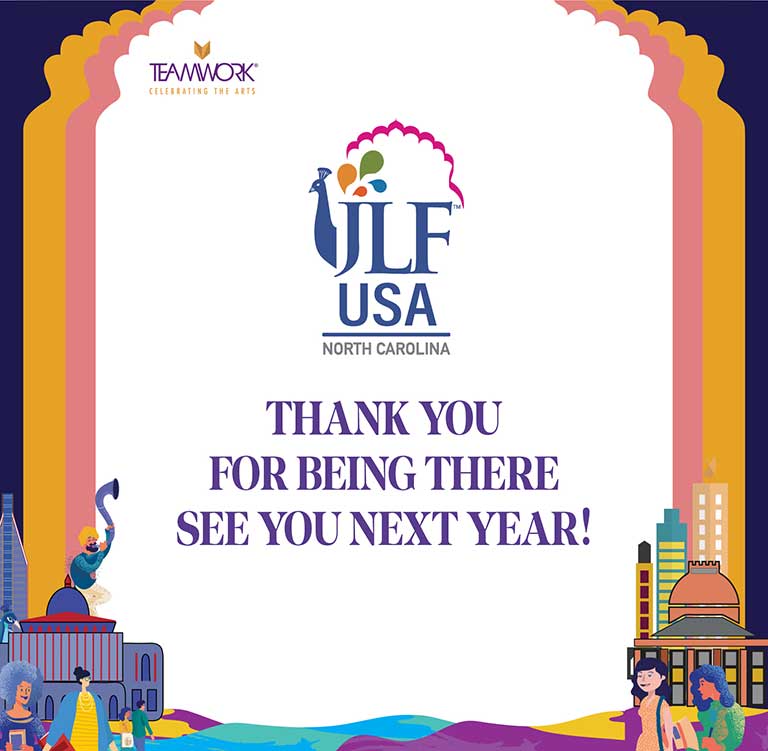

Meetings with Remarkable Manuscripts Christopher de Hamel introduced by William Dalrymple Presented by Bagri Foundation
In this session presented by Bagri Foundation, author-historian William Dalrymple introduced Christopher de Hamel, Fellow of Corpus Christi College, Cambridge, who discussed his book, Meetings with Remarkable Manuscripts, in what was a highly informative, and one of the most amusing sessions at ZEE JLF at the British Library.
Dalrymple recalled receiving a packet in post, with a beautiful postcard written in fountain pen, “with a particular colour of blue inkâ€. With it, was “the most exciting manuscript from all medieval publishersâ€. He exclaimed how he had not been wrong in believing that this book would be huge. An extraordinary and beautifully illustrated study of the medieval world through twelve manuscripts, Meetings with Remarkable Manuscripts, went on to win The Wolfson History Prize and The Duff Cooper Prize for Non-Fiction.
De Hamel recounted his journey from collecting stamps in his younger days to collecting thousand year old manuscripts. In a fascinating and funny way, he described his experience of finding and acquiring medieval manuscripts and their fragments, visiting the locations where they were kept, and situating several rare and exotic, actual and mythological places and creatures inside these manuscripts. Elephants, it seems, caught his eye quite a few times. And not just elephants as we know them, but some with quite quirky features, one of them with “hairstyle rather like Donald trumpâ€. He noticed how in these manuscripts India was a fabled land near the site of a paradise, a land of gems and unbelievable animals. Recounting his visit to India last year and in 1959, he described his personal encounter with elephants. De Hamel remarked, sarcastically, that he was rather astonished to see how far these manuscripts were in their imagination of what elephants really looked like.
As one of the world’s leading experts on manuscripts, it was heart-warming to see De Hamel talking about his obsession and describing the “irresistible tactile encounter†with any historical book. Manuscripts, he said, are a manifestation of history combined with art, and one has to have “an extraordinary sense of personal interaction†to really study medieval book. How? “By actually touching itâ€, he said. De Hamel observed that he always values such a tactile experience, so much so that he is against the use of gloves in what he calls an “interview†with the manuscripts. “Some libraries make you wash hands, and make you get rid of sticky chocolates on your fingersâ€. These interviews, according to him, have to be an intimate experience, in order to be fully aware of all that a manuscript has to offer. “Like people, they’ve all had livesâ€, he exclaimed.
De Hamel took the audience through several images that gave details of his experience of seeing thousand years of medieval history through these manuscripts. Some of them were “too famousâ€, at the same time, “far too fragileâ€. In his usual wit, he invited the audience to take a look at the exhibition currently running in the British Library: “I used to be a little cautious about inviting too many people for the fear that they will arrive at once. But now I am retired. I don’t care.â€
“But, be careful!â€, warned the enthusiastic expert.



Leave a comment